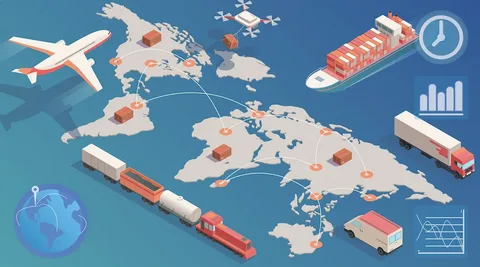Fiscal Stimulus and Government Spending Fiscal Stimulus boosts economic recovery through increased consumer spending. When a government implements fiscal stimulus measures, such as tax cuts or increased public spending, it effectively puts more money into the hands of consumers. This additional disposable income can lead to a rise in consumer spending, which in turn stimulates
Fiscal Stimulus and Government Spending

Image by : Yandex
Fiscal Stimulus boosts economic recovery through increased consumer spending. When a government implements fiscal stimulus measures, such as tax cuts or increased public spending, it effectively puts more money into the hands of consumers. This additional disposable income can lead to a rise in consumer spending, which in turn stimulates demand for goods and services. As businesses experience higher demand, they may increase production, hire more employees, and invest in expansion efforts. This creates a positive feedback loop that can significantly enhance economic recovery. The multiplier effect of fiscal stimulus ensures that the initial government expenditure generates a much larger impact on the overall economy, helping to pull it out of recession or economic downturn.
Government spending on infrastructure accelerates economic recovery. Infrastructure projects, such as building roads, bridges, and public transportation systems, not only create immediate jobs but also enhance the long-term productive capacity of the economy. Improved infrastructure reduces transportation costs, increases efficiency, and facilitates trade and commerce. These projects often require substantial labor, materials, and services, providing a direct boost to various sectors of the economy. Additionally, modern and efficient infrastructure attracts private investment, further stimulating economic activity. By prioritizing infrastructure spending, governments can lay the foundation for sustained economic growth and recovery, ensuring that the benefits are widely distributed across different regions and communities.
Monetary Policy Adjustments
Interest rate cuts to stimulate economic recovery. Central banks play a crucial role in managing economic recovery through monetary policy adjustments. One of the primary tools at their disposal is the manipulation of interest rates. By lowering interest rates, central banks make borrowing cheaper for businesses and consumers. This encourages spending and investment, as lower interest rates reduce the cost of financing new projects, purchasing homes, or expanding businesses. The increased borrowing and spending activity can help to revive economic growth by boosting demand for goods and services. Additionally, lower interest rates can lead to a depreciation of the national currency, making exports more competitive and further supporting economic recovery.
Quantitative easing to support economic recovery initiatives. Quantitative easing (QE) is another powerful monetary policy tool used by central banks to stimulate economic recovery. Under QE, central banks purchase government bonds and other financial assets from the market, injecting liquidity into the financial system. This increase in money supply lowers interest rates and encourages lending and investment. The additional liquidity can help stabilize financial markets, reduce borrowing costs, and support asset prices. By promoting a favorable financial environment, QE facilitates economic recovery by encouraging spending and investment. Furthermore, QE can signal the central bank’s commitment to supporting the economy, boosting confidence among investors and consumers.
Support for Small and Medium Enterprises
Access to affordable credit for economic recovery. Small and medium enterprises (SMEs) are often the backbone of the economy, driving innovation, employment, and economic growth. Ensuring that SMEs have access to affordable credit is essential for economic recovery. During economic downturns, SMEs may face challenges in securing financing due to tightened credit conditions and increased risk aversion among lenders. Governments and financial institutions can address this issue by implementing measures such as loan guarantees, interest rate subsidies, and targeted lending programs. By providing SMEs with the necessary financial resources, they can continue their operations, invest in growth opportunities, and contribute to the overall economic recovery.
Streamlined regulatory processes to boost economic recovery. Regulatory burdens can hinder the ability of SMEs to thrive and grow. Simplifying and streamlining regulatory processes can significantly enhance the business environment, making it easier for SMEs to start, operate, and expand. Governments can undertake regulatory reforms to reduce red tape, expedite licensing and permitting procedures, and create a more business-friendly environment. By removing unnecessary barriers and providing clear and consistent regulations, governments can foster entrepreneurship and innovation. This, in turn, can drive economic recovery by enabling SMEs to contribute more effectively to job creation, productivity, and overall economic growth.
Investment in Infrastructure

Image by : Yandex
Boosting infrastructure investment for rapid economic recovery. Investment in infrastructure is a key driver of economic recovery, as it creates immediate employment opportunities and stimulates demand for materials, equipment, and services. Large-scale infrastructure projects, such as building highways, airports, and energy facilities, generate significant economic activity and have a multiplier effect on the economy. They create jobs not only in construction but also in related industries such as manufacturing, transportation, and services. The increased employment and income generated by these projects lead to higher consumer spending, further stimulating economic growth. By prioritizing infrastructure investment, governments can accelerate economic recovery and lay the groundwork for long-term prosperity.
Modernizing infrastructure to stimulate economic recovery and growth. In addition to new infrastructure projects, modernizing existing infrastructure is crucial for economic recovery and growth. Aging infrastructure can be a drag on productivity and economic efficiency. Upgrading and modernizing infrastructure, such as improving public transportation systems, enhancing digital connectivity, and upgrading energy grids, can enhance the overall competitiveness of the economy. Modern infrastructure reduces costs, improves access to markets, and facilitates innovation and technological advancements. By investing in modern infrastructure, governments can create a more resilient and dynamic economy, capable of sustaining long-term growth and recovery.
Promotion of International Trade
Boosting exports for broader economic return. International trade plays a vital role in economic recovery by expanding markets and creating new opportunities for businesses. Boosting exports can help countries recover from economic downturns by increasing demand for domestically produced goods and services. Governments can support export growth through various measures, such as providing export financing, reducing trade barriers, and negotiating favorable trade agreements. By promoting exports, countries can diversify their economic base, reduce dependence on domestic demand, and tap into global markets. This can lead to increased production, job creation, and overall economic growth, contributing to a broader and more sustainable economic return.
Facilitating international partnerships for economic return. International partnerships and collaborations can enhance economic return by fostering innovation, knowledge sharing, and investment. Governments can facilitate international partnerships by creating a conducive environment for foreign direct investment (FDI), establishing trade and investment agreements, and promoting cross-border collaborations. These partnerships can bring in new technologies, expertise, and capital, driving economic growth and return. Additionally, international partnerships can open up new markets for domestic businesses, providing them with opportunities to expand and diversify. By fostering international cooperation, governments can create a more interconnected and resilient global economy, capable of withstanding future economic challenges.
In conclusion, a multifaceted approach encompassing fiscal stimulus, monetary policy adjustments, support for SMEs, investment in infrastructure, and promotion of international trade is essential for economic return. Each of these strategies plays a vital role in stimulating demand, creating jobs, and fostering long-term economic growth. By implementing these measures effectively, governments can navigate the challenges of economic downturns and pave the way for a robust and sustainable return.






















